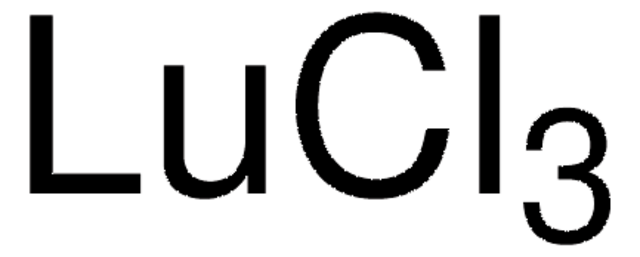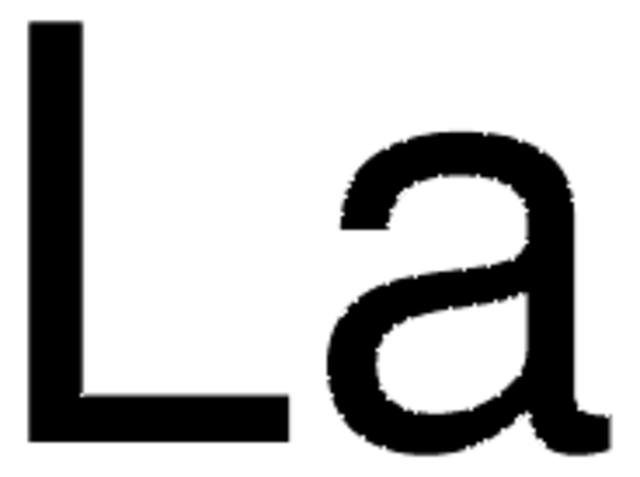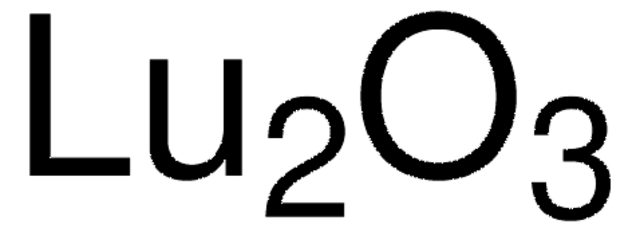GF58573648
Lutetium
powder, 1g, max. particle size 500 micron, 99.9%
Sinonimo/i:
Lutetium, LU006010
About This Item
Prodotti consigliati
Saggio
99.9%
Forma fisica
powder
Produttore/marchio commerciale
Goodfellow 585-736-48
Resistività
54 μΩ-cm, 20°C
Dimensione particelle
500 μm
P. eboll.
3402 °C (lit.)
Punto di fusione
1663 °C (lit.)
Densità
9.84 g/mL at 25 °C (lit.)
Stringa SMILE
[Lu]
InChI
1S/Lu
OHSVLFRHMCKCQY-UHFFFAOYSA-N
Cerchi prodotti simili? Visita Guida al confronto tra prodotti
Descrizione generale
Note legali
Avvertenze
Danger
Indicazioni di pericolo
Consigli di prudenza
Classi di pericolo
Flam. Sol. 1
Codice della classe di stoccaggio
4.1B - Flammable solid hazardous materials
Classe di pericolosità dell'acqua (WGK)
WGK 3
Punto d’infiammabilità (°F)
Not applicable
Punto d’infiammabilità (°C)
Not applicable
Scegli una delle versioni più recenti:
Certificati d'analisi (COA)
Ci dispiace, ma al momento non ci sono COA disponibili online per questo prodotto.
Se ti serve aiuto, non esitare a contattarci Servizio Clienti
Possiedi già questo prodotto?
I documenti relativi ai prodotti acquistati recentemente sono disponibili nell’Archivio dei documenti.
Il team dei nostri ricercatori vanta grande esperienza in tutte le aree della ricerca quali Life Science, scienza dei materiali, sintesi chimica, cromatografia, discipline analitiche, ecc..
Contatta l'Assistenza Tecnica.








